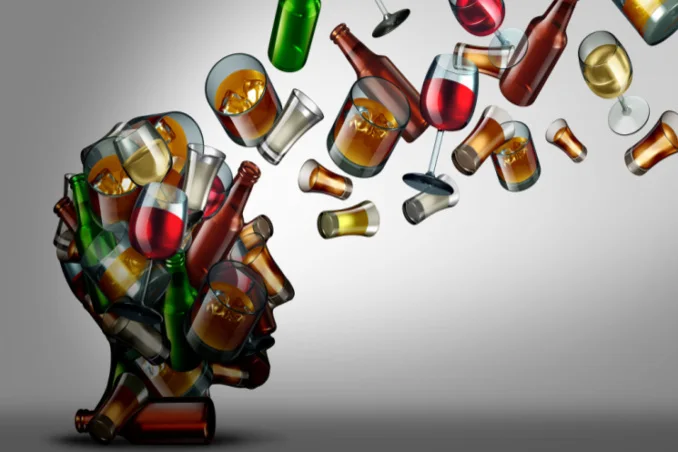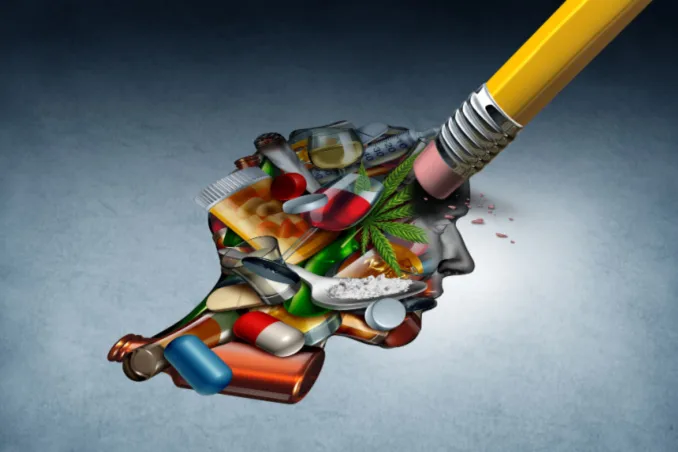The Dangers of Quitting Alcohol Cold Turkey
Table of Contents
- The Dangers of Quitting Alcohol Cold Turkey
- The Risks of At-Home Alcohol Detox
- Understanding Alcohol Withdrawal
- Identifying the Two Phases of Withdrawal from Alcohol
- Common symptoms of PAWS include:
- Timeline of Symptoms When Quitting Cold Turkey
- Treating Withdrawal Symptoms
- Addiction Services and Resources: Available 24/7
- Medically Reviewed By
Consuming alcohol in frequent and large quantities comes with a plethora of associated risks and health problems. Unfortunately, alcoholism is a common problem for many and is one of the biggest public health crises in the United States today. In fact, approximately 1 in 12 men and 1 in 25 women suffer from an alcohol abuse disorder in the United States, while 88,000 people die of alcohol-related causes each year. If you’re thinking about ending your drinking by quitting alcohol cold turkey, our resource guide will let you know what to expect.
Alcoholism is a growing problem in America, but one that can be treated as long as there is clear access to the right recovery resources.
Unfortunately, it’s far too often that individuals who are struggling with alcohol addiction feel like they don’t have the right support system or the accessibility to resources that can help them properly recover. When this happens, many decide to take matters into their own hands and attempt to quit drinking cold turkey. However, many don’t realize the risks and dangers associated with the sudden cessation of alcohol consumption.
The Risks of At-Home Alcohol Detox
Specifically, quitting any form of alcohol consumption can actually jumpstart withdrawal — a process that is long, brutal, and requires professional treatment and management. This is because the body is so heavily dependent on alcohol that when the consumption stops, the body doesn’t remember how to function properly without it. That’s why it’s so important — if possible — to gradually start the process of quitting alcohol in order to reduce the likelihood of an excessively difficult withdrawal. Quitting cold turkey can cause many more health-related problems, especially those related to the heart and brain.
In the most extreme cases, those with serious alcohol addiction can experience Alcohol Withdrawal Syndrome — a potentially life-threatening condition that is amplified in those who decide to quit drinking cold turkey. Even if the patient does not develop this syndrome, it’s important to note the proper treatment of alcohol withdrawal. The abrupt cessation of drinking can be dangerous and even fatal if not managed correctly.
We strongly advise that anyone considering the courageous next steps of recovering from alcohol addiction seek the council of a treatment professional before making any rash decisions related to their recovery.
Understanding Alcohol Withdrawal
Alcohol is notorious for its sedating and depressing effect on the brain. Those who have a long history of heavy alcohol use have brains that are constantly exposed to its debilitating effects. However, the brain isn’t the only organ that’s affected by alcohol abuse — the liver gets the worst of it as well. As alcohol enters the body, the liver uses its enzymes to break down and metabolize it so that it can be eliminated from its system.
Unfortunately, the liver can only take on so much; any excess alcohol that can’t be processed is absorbed by the brain and other organs.
With time and prolonged abuse, the brain begins to adjust to its new chemistry by stimulating higher than normal levels of serotonin and norepinephrine (similar to adrenaline). The brain and the body get used to the high alcohol levels, so when it abruptly stops, the brain becomes overstimulated and goes into overdrive — starting the withdrawal process.
Alcohol withdrawal is a lengthy process that places a significant amount of strain on the body. When an individual stops drinking after years of heavy abuse, the body experiences a complete shock to its system. When withdrawal sets in, most people will feel the physical symptoms first, like tremors, nausea, and headaches. However, as the withdrawal persists, physical symptoms intensify, and mental symptoms will begin to present themselves.
Due to its intense nature, it’s highly advisable to seek professional treatment for medical detox and withdrawal management, as this process can be life-threatening in certain circumstances.
Identifying the Two Phases of Withdrawal from Alcohol
Although alcohol withdrawal and its onslaught of symptoms display differently in each person, there is a bit of a system in the entire process. Specifically, there are two key phases of withdrawal: Acute Alcohol Withdrawal and Post-Acute Withdrawal Syndrome (PAWS).
Acute Alcohol Withdrawal describes the first phase of withdrawal. This phase usually begins soon after a person has decided to stop drinking. More than anything, Acute Alcohol Withdrawal is the body’s physical response to the lack of alcohol, and without proper monitoring, it can quickly become life-threatening — especially in the cases of those who quit alcohol cold turkey.
When an individual decides to quit drinking cold turkey, they put themselves at great risk of developing Acute Alcohol Withdrawal Syndrome. Acute Alcohol Withdrawal Syndrome is a severe condition that can develop within the first couple of weeks of one’s cessation. During this time, patients can lose consciousness, have seizures, or exhibit signs of Delirium Tremens (DT).
DT is the rapid onset of confusion as a result of severe alcohol withdrawal. Often, Delirium Tremens occur within three days of withdrawal and can last between two to three days. Common symptoms of DT include shaking, sweating, shivering, irregular heart rate, and hallucination. Since these symptoms can be dangerous and severe, it’s, again, ideal to seek professional help while detoxing — whether it be in a hospital or in a reputable rehabilitation center that’s equipped to treat detoxing patients.
Once the initial symptoms of Acute Alcohol Withdrawal begin to subside, individuals may experience other uncomfortable side effects. When this occurs, it usually means the patient is moving into the second phase of withdrawal — Post-Acute Withdrawal Syndrome (PAWS). PAWS can develop within weeks or months after an individual stops drinking. On average, the symptoms of PAWS occur between four to eight weeks after an individual stops drinking cold turkey.
Common symptoms of PAWS include:
- Low Energy Levels
- Insomnia
- Irritability
- Emotional Outbursts
- Anxiety
- Memory Problems
- Dizziness
- Becoming Accident Prone
- Delayed Reflexes
Unfortunately, the length of PAWS varies and can even recur after it subsides. This challenging phase can make post-rehab life very difficult. That’s why it’s incredibly important to have the right support system in place to help you cope and persevere during this process.
Timeline of Symptoms When Quitting Cold Turkey
As mentioned earlier, alcohol withdrawal symptoms usually vary from person to person. This is primarily due to the person’s age, frequency of drinking, and the length of time they’ve abused alcohol. Typically, symptoms of withdrawal develop within 8 hours of a person’s last drink. However, those who quit drinking cold turkey can experience withdrawal symptoms as early as two hours after their last drink.
Common symptoms to occur during the first 24 to 48 hours include insomnia, rapid heartbeat, changes in blood pressure, sweating, shaking, and fever.
Common withdrawal symptoms occur at different times:
Alcohol Withdrawal Timeline – Six to Twelve Hours: At the six to twelve hour mark, most patients begin experiencing mild physical symptoms like shaking, nausea, vomiting, and headaches. Some psychological symptoms like agitation and anxiety can also develop during this initial stage of withdrawal.
Alcohol Withdrawal Timeline – Twelve to Twenty-Four Hours: Between twelve and twenty-four hours, more psychological symptoms will begin to manifest. These symptoms include disorientation, tremors, and seizures. Some people may even begin to experience visual, auditory, and tactile hallucinations. These symptoms can be severe and life-threatening, so it’s important for patients to be in a safe space when these symptoms occur.
Alcohol Withdrawal Timeline – Forty-Eight Hours: Two days into withdrawal can be some of the most demanding hours of the entire withdrawal process as more severe side effects begin. These include:
- Seizures
- High Blood Pressure
- Insomnia
- Hallucinations
- Fever
- Excessive Perspiration
In addition to these symptoms, Delirium Tremens can begin to set in. Typically, DT takes about three days to commence, but there are certain circumstances that cause the early onset of this serious symptom.
It’s important to note that some people — in rare cases — experience other extreme withdrawal symptoms like sleep disturbances (i.e., night terrors), fatigue, and rapid changes in mood. Sometimes, these symptoms can last for months after the initial start of withdrawal.
Although the effects of withdrawal can be intense and long-lasting, they are also treatable. With the proper medical treatment and detox services, most patients fully recover from their withdrawal from alcohol. However, once the withdrawal stages are over and detox is completed, individuals will need to prepare themselves for the most important stage of it all — recovery.
Treating Withdrawal Symptoms
The withdrawal symptoms associated with quitting cold turkey can shift, change, and manifest without any warning. A person can go from feeling fine one minute to having severe symptoms the next, which is why it’s important to reiterate how dangerous it is to quit drinking cold turkey. Regardless, its unpredictable nature and drastic symptoms require additional and professional help to properly monitor the length of the withdrawal period.
Luckily, there are a plethora of specialized rehab facilities and services available to assist in the detoxification and recovery process. These facilities are designed to help individuals manage their symptoms while guiding them and their families through the next steps.
If you are someone you know is struggling with addiction and in need of a safe and certified place to detox, here are a few options to consider:
- Inpatient Treatment: For those who are severely struggling with addiction and require constant one-on-one care, an inpatient treatment facility might be their best option. Treatment from an inpatient facility is also one of the best options for those who are struggling with both addiction and mental health illnesses, as many of these programs provide dual diagnosis treatment. Not to mention, the 24-hour care these facilities provide their patients with can be extremely helpful as they experience withdrawal from alcohol. Typically, these programs range from 30, 60, or 90 days.
- Outpatient Treatment: Unlike inpatient treatment, outpatient facilities enable patients to attend treatment while maintaining their daily routines and responsibilities. These treatment programs are part-time and recommended to those who have less severe additions. Depending on the facility, individuals will attend outpatient facilities 10 to 12 hours a week for a period of three months to a year.
- Medication-Assisted Therapy: Medication-assisted treatment (MAT) describes the use of medication in combination with counseling and therapy to treat certain addictions. If you are struggling with alcohol addiction and are willing to take the next steps towards recovery, medication-assisted therapy can be a good option for you. However, it’s advised that you speak to your doctor or primary care physician to discuss what might be the most helpful for you and your recovery needs.
- Counseling: Therapy and counseling are essential components of the recovery process. Once a person successfully completes detox, it’s important to continue treatment in hopes of one day achieving recovery. Part of that recovery includes both individual and group counseling. A seasoned and certified therapist or counselor can help patients work through the stages of their addiction and find healthy tools to manage their cravings and triggers. Importantly, counseling is there to help those on the path to recovery pave out a healthy and happy lifestyle that’s free from substance abuse.
Addiction Services and Resources: Available 24/7
If you or someone you love is struggling with addiction, please know that this isn’t a challenge you have to face alone. Support and treatment resources are always ready and available — all you have to do is ask. Most importantly, quitting cold turkey may seem like the immediate answer, but it isn’t. Quitting drinking cold turkey — especially for those with a long history of alcohol abuse — can actually result in worse outcomes due to the variety of complex symptoms it can cause.
It’s imperative that you begin your detoxing with the help of licensed professionals — whether it be in a treatment facility or hospital. This way, you have a full understanding of the process ahead of you and can be better prepared for the associated risks.
For more information on addiction treatment and detox facilities, please contact Find Addiction Rehabs. Our team is available around-the-clock to assist you with any questions you may have about treatment and the withdrawal process. With access to a nationwide directory of treatment facilities, we can help you or your loved one locate the right facility that offers top-of-the-line detox services. Give us a call today to start your journey to sobriety!
Eric R. hails from Maine and does extensive work in the field of behavioral health as both a professional writer and passionate advocate for those suffering. From his own personal encounters with mental illness, he speaks to those seeking healthy relief from depression and anxiety and embraces wellness both personally and professionally. After losing friends and family to the darkness of suicide, Eric aims to educate and inform about the nature of treatment and render it accessible for all those seeking a way out of darkness and despair.






